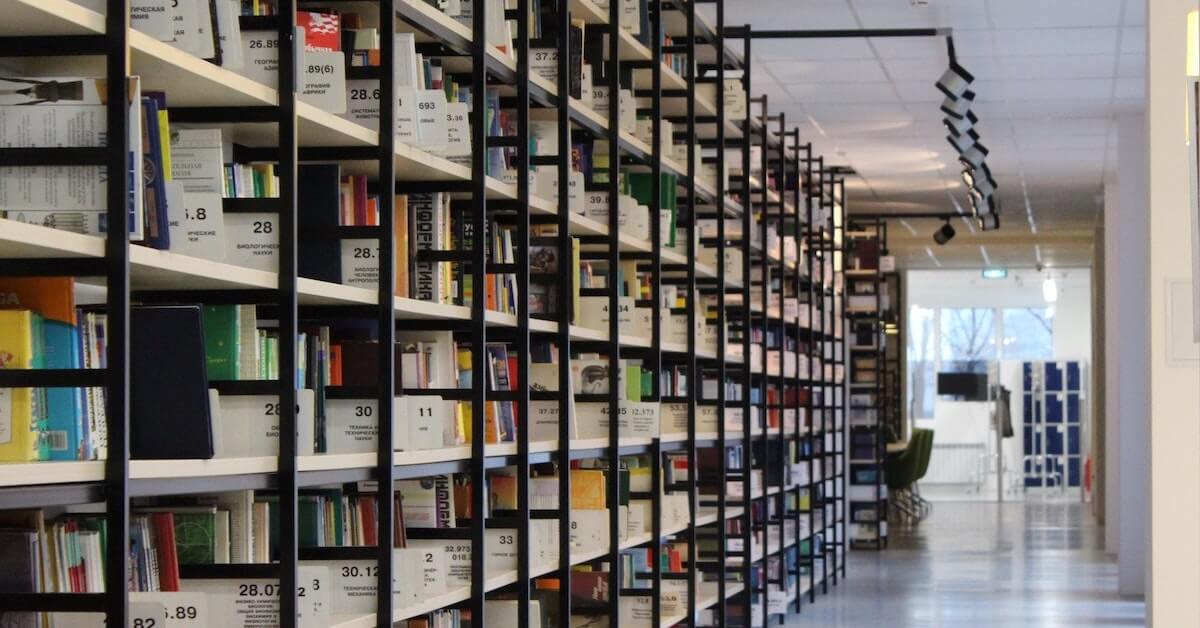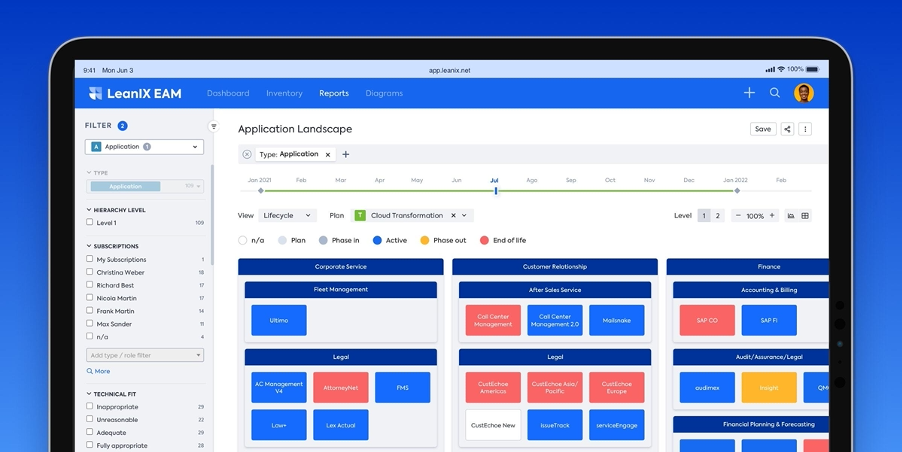
Application rationalization is often seen simply as a cost-cutting exercise. That's a mistake. It can also be an effective way to drive growth and innovation in your organization.
Application rationalization isn't just about retiring legacy or redundant applications. In fact, it can and should guide investment to drive growth.
It's true that assessing your application portfolio will almost certainly bring to light unused and duplicate applications ripe for elimination. It's also true that doing so will free up budget to re-invest. What you may not have considered is that your application rationalization process will also cast a light on mission critical applications that would benefit from investment.
Documenting and gathering intelligence on your application portfolio is key for determining which applications can be cut and which you should spend more on. That's why our customers leverage LeanIX EAM to support application rationalization.
Let's look more closely at how application rationalization can support growth, as well as cut costs.
What Is Application Rationalization?
Application rationalization is the process of looking at all the software applications that your organization uses with the aim of optimizing the toolset to best support your business goals at the lowest expense.
This does mean reducing spend wasted on unneeded applications and their associated maintenance. Yet, it also means investing more resources in mission-critical applications to increase return on investment (ROI).
Your application rationalization initiative should include:
- Removing legacy applications that are no longer used
- Replacing applications that are no longer best-of-breed with applications that are a better fit
- Adding additional licenses to expand usage of a beneficial applications
- Upgrading subscriptions to premium versions to unlock more capabilities
So, how do you decide which applications to retire and which to invest in?
The TIME Methodology
Application rationalization is entirely reliant on accurate information. This means gathering granular data on each application in your portfolio. Using LeanIX EAM, you can gather, store, collate, and analyze information about your entire application portfolio, including the interconnections between apps. This makes decision-making straightforward.
The simplest way to log those decisions is to categorize each application according to the Gartner TIME methodology. Flag each application under one of the four categories in the TIME matrix within our EAM:
Tolerate: accept the application in its current state for the time being
Invest: prioritize gaining maximum value from this high-priority app
Migrate: work on finding a better application to fulfill this need or move the application to the cloud
Eliminate: remove the application as it is not needed or desirable
To find out more about applying the TIME framework, download our free whitepaper:
Notice that "invest" is a key part of the TIME methodology. In other words, it isn't just about reducing costs. It's about ensuring that you spend money in a way that best serves the needs of the organization.
Application Rationalization Can Enable Growth
Application rationalization is about investment as much as reducing waste. The money you save retiring legacy applications can then be reinvested on improving crucial tools.
When an application offers a decent return on investment (ROI), increasing your spend on it may offer an increased return. Such investment can focus on unlocking premium features or purchasing more licenses to offer the tool to other users and teams.
This type of investment can unlock tremendous value for your business:
- Enhanced recruiting software can help find key talent
- New features for Business analysis tools can offer profit-driving insight
- More licenses for sales-enablement software can improve the performance of sales teams worldwide
- Better regtech can empower you to enter new markets in a compliant way
- Updated enterprise resource planning (ERP) systems can improve logistics
Thinking of application rationalization solely in terms of cost reduction misses the true value that optimizing your application portfolio can provide. It can result not only in better performing software but also in the expansion of your organization's capabilities.
Application Rationalization Drives Innovation
Application rationalization does bring cost savings, to be sure. But it should ultimately be about modernizing what you have and adopting new technologies.
Consider the collaboration benefits and cost-savings you can achieve by replacing on-premise applications with cloud-native applications. Before you do that, however, you need to understand the dependencies of the applications you are replacing and map out the best strategy for replacing them without breaking anything.
A systematic approach to enterprise architecture mapping and application rationalization makes that possible.
Or consider the emergence of generative artificial intelligence (AI) like ChatGPT. Many popular applications have begun enhancing their latest releases or premium versions with AI features that offer a competitive advantage to users.
When innovative technology is released onto the market, understanding where it can fit into your application portfolio is key. Running regular application rationalization initiatives will keep your portfolio ready to integrate whatever innovations the market offers.
How LeanIX Can Support You

Application rationalization is one of the key use cases for LeanIX EAM. Maintaining a detailed overview of your software application portfolio and IT landscape makes rationalization a repeatable standard practice for any organization.
Rationalization ensures that you're not overspending on your application portfolio and thus helps rationalize your budget. LeanIX EAM helps you identify apps to eliminate and understand how you can work to extricate them from your portfolio.
Yet, that's far from the end of the story. By understanding where your application portfolio is today and where it should be to meet the business demands of the future, you can begin replacing legacy apps with new, best-of-breed technology.
Lastly, you can invest in both mission-critical applications and innovative new technology, giving you a competitive edge on the market. Thanks to LeanIX EAM, you can then model your target landscape to ensure these technologies can have the greatest impact.
To find out more about how LeanIX EAM supports your application rationalization efforts, book a demo:



/EN/White-Paper/EN-IDC-Inforbrief-Application-Rationalization-Portfolio-Management-Thumbnail_v2.png?width=140&height=99&name=EN-IDC-Inforbrief-Application-Rationalization-Portfolio-Management-Thumbnail_v2.png)

